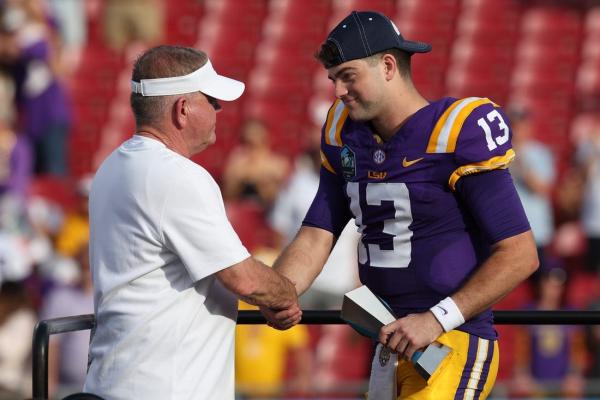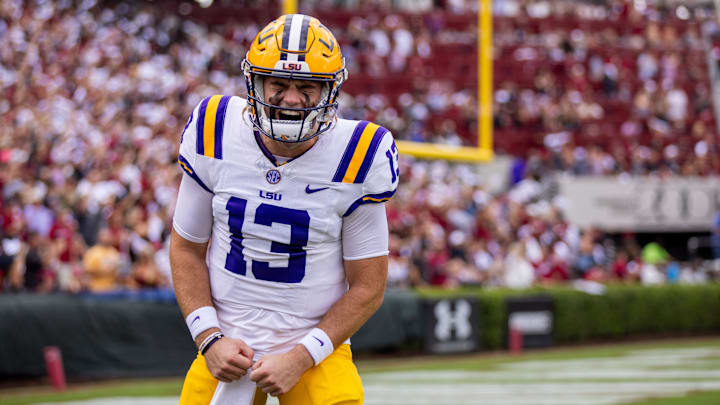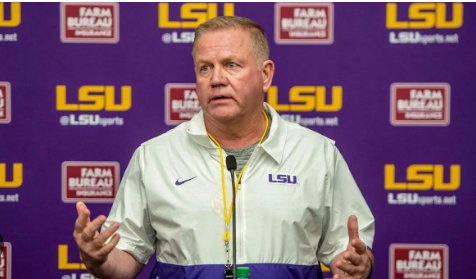Brian Kelly’s expectations for Garrett Nussmeier’s completion percentage being “in the 60s” highlight how LSU’s offensive scheme differs from the systems that helped Joe Burrow and Jayden Daniels reach high completion rates while winning the Heisman. Both Burrow and Daniels thrived on a combination of efficiency and explosiveness, making deep throws while maintaining accuracy. However, Kelly’s comment suggests that LSU’s current offense may involve more challenging throws, fewer quick, high-percentage passes, and a focus on pushing the ball downfield. As a result, Nussmeier’s completion percentage might not reach the 70% range but could still reflect productivity within the context of LSU’s system.
Garrett Nussmeier’s 64.7% overall completion rate shows solid efficiency, ranking him 40th nationally among qualified quarterbacks, but his performance dips to 55% in Southeastern Conference play. Despite this lower completion percentage in SEC matchups, his other statistics still place him among the top quarterbacks in the country. This suggests that while he may not have elite efficiency in terms of completion rate, he’s excelling in other areas, such as passing yards, touchdowns, or explosive plays. The challenging nature of SEC defenses and LSU’s offensive scheme, which emphasizes difficult throws rather than easy completions, could account for the lower percentage against conference opponents.

Brian Kelly’s comments about Garrett Nussmeier’s completion percentage provide insight into LSU’s offensive philosophy. Unlike previous LSU quarterbacks like Joe Burrow and Jayden Daniels, who relied on high-percentage throws like screens and quick passes to maintain high completion rates, Nussmeier operates in a system designed to challenge defenses with more difficult, deeper throws. Kelly noted that LSU does not often use easy concepts like bubble screens, which can inflate a quarterback’s completion percentage. Instead, Nussmeier is tasked with making full-field reads and executing more complex throws that push the ball downfield, which is why his completion percentage sits in the 60s rather than the 70s.
Though Nussmeier has completed only 55% of his passes against SEC defenses, his ability to distribute the ball effectively across multiple targets keeps LSU’s offense dynamic and unpredictable. He ranks among the top in passing yards per game and touchdowns, indicating that his success is built on more than just raw efficiency. Even when defenses, like Arkansas, tried to limit deep shots by playing soft coverage, Nussmeier adjusted, hitting short routes to exploit what was available, leading LSU to victory.

Kelly emphasized that LSU’s offense, while perhaps less efficient in terms of completion percentage, is harder to defend because it spreads the ball across the field. This strategy benefits Nussmeier’s skillset and allows LSU to keep opposing defenses guessing, which Kelly believes is more important than achieving a high completion rate.



